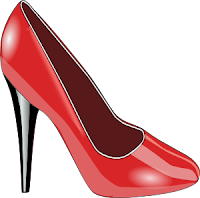Souvenir Suggestions -- the RUANA
 So, you have adopted a child or will adopt a child from the Altiplano Cundi-Boyacense and you want to purchase them a great souvenir. Something that will reflect the culture of the region where they were born. What should you choose?
So, you have adopted a child or will adopt a child from the Altiplano Cundi-Boyacense and you want to purchase them a great souvenir. Something that will reflect the culture of the region where they were born. What should you choose?Might I suggest a RUANA.
A ruana is a woolen poncho that has its roots in the ancient Chibcha (Musica) indigenous culture. The story of the ruana starts with the following Chicbha legend:
According to the stories told to the Spanish by these Indians, the Chicbhas were once visited by a powerful, yet simple and loving God. This God’s name was Bochica, also known as Nemqueteva, and less often Sadigua. He appeared 3 different times and it seems unclear as to whether it was the same person all three times. Bochica is the most common name associated with the story that relates to the ruana.
According to the story, Bochica had white skin and a beard down to his waist – both were unusual as the Indians had dark brown skin and were Lampiños (unable to grow body or facial hair). He had bare feet and wore a long tunic that was tied with a knot at the shoulder. He arrived in the Bacatá (now Bogotá) valley a top a strange animal – which upon hearing the description, the Spanish chroniclers believed might have been a camel.
When Bochica arrived a top his camel, the native population did not know how to farm. They lived off the land. They wore little clothing and were often cold and hungry. When this great white God saw the hunger, poverty, and nakedness of the Chibchas, he taught them to cultivate the land, harvest the fruit thereof, and store food until the next harvest season.
He also showed the people how to get thread from native plants and then how to use the threads to make clothing. The clothing that was made was in essence – the ruana – a big square with a hole in the middle for your head.
When the Spanish and their sheep arrived, the plant fibers were replaced by wool. So the wool ruana of today is the ultimate mixture of the two cultures of Colombia. In fact, the influence of the ruana is so pronounced that even the name of one of the departments of Colombia comes from this piece of clothing. The Chicbhas used the word BOY for the ruanas (mantas in Spanish) that they made. Eventually, the name Boyacá came from the Chicbha BOY and the Spanish (acá or here) – it means Ruanas Here – or Land of the Ruanas.
So, a ruana would be a wonderful, significant souvenir for your child.
Where can you buy a ruana?
There are places in Bogotá, but if you want to take a weekend trip from Bogotá, plan to go to Paipa, Boyacá, for the night and then spend a morning shopping in the Ruana capital of Colombia -- Nobsa, Boyacá. Nobsa is located about 3 ½ hours from Bogotá in the very safe part of Boyacá. A great time to go is May 24-26 for the International Festival of the Ruana.
If you are already home, there is a chance to get them online or through friends. If you are interested, let me know.
Here are links to see more about ruanas and Nobsa.
http://www.colombiadefiesta.com/galeria/nobsa07.html
Here are links to see more about ruanas and Nobsa.
http://www.colombiadefiesta.com/galeria/nobsa07.html

Comments